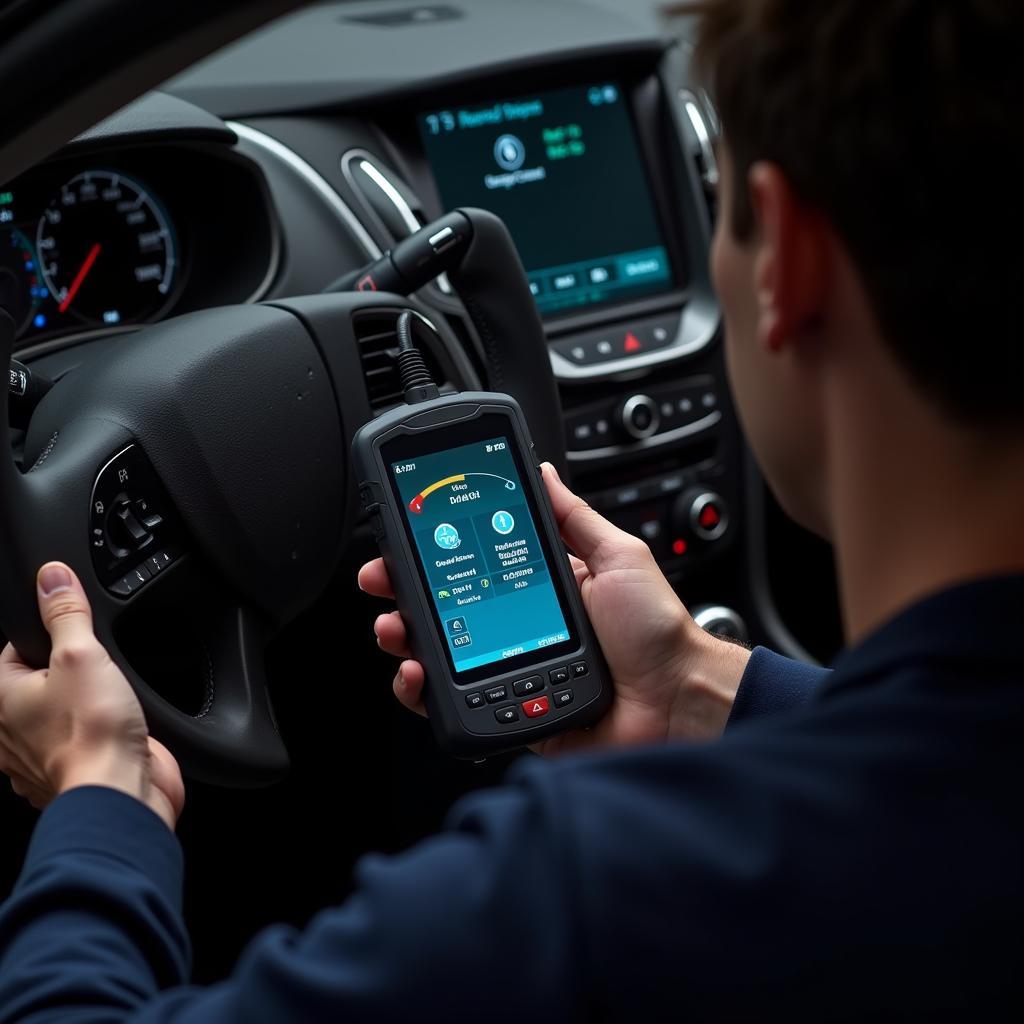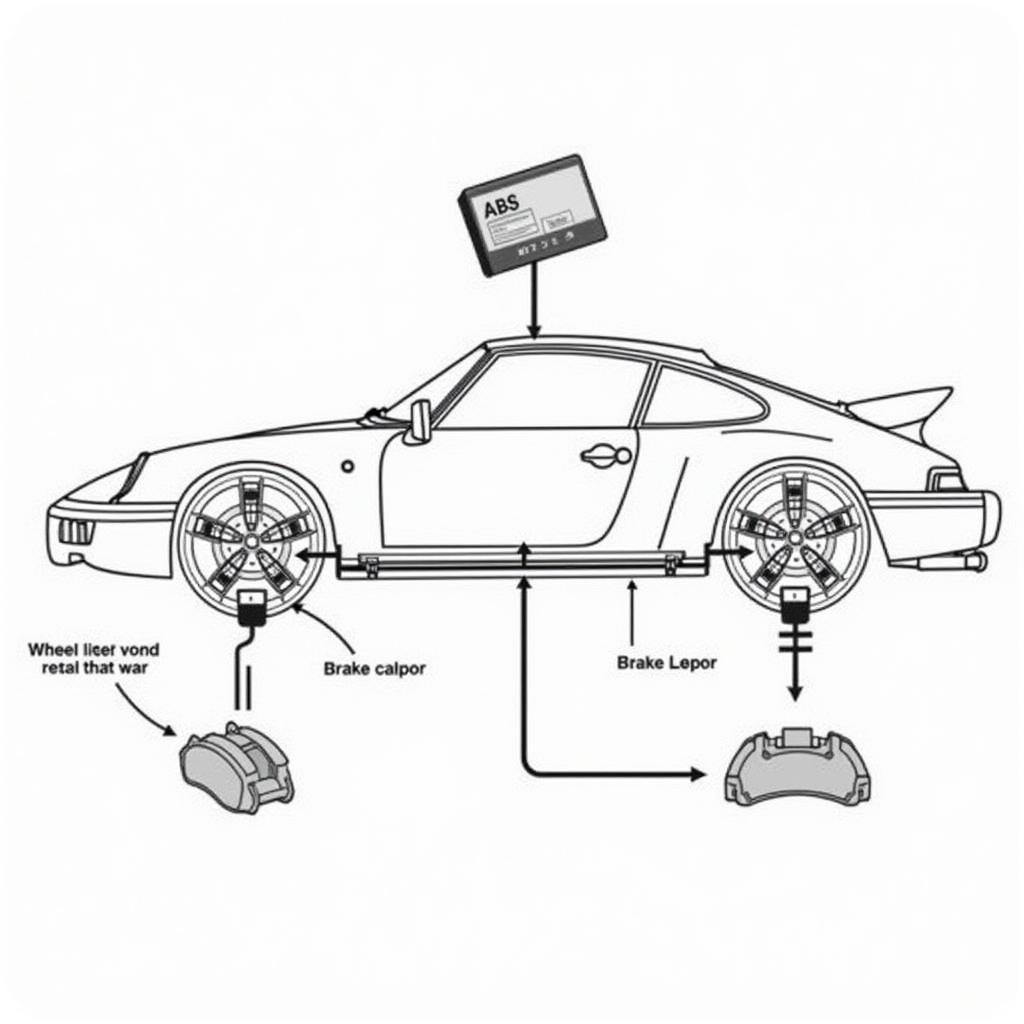A glowing brake warning light on your Chevy Malibu’s dashboard can be alarming. It’s a clear sign that something’s not right with your braking system and requires immediate attention. While it could be a minor issue, ignoring it could lead to dangerous driving conditions.
This comprehensive guide dives deep into the common causes of a Chevy Malibu brake warning light, troubleshooting tips, and potential solutions. We’ll also explore the importance of professional diagnostics and remote software solutions for a safe and smooth driving experience.
Deciphering the Warning: What’s Triggering Your Brake Light?
Your Malibu’s brake warning light is part of its intricate self-monitoring system. When illuminated, it signals a potential issue with one or more components within your braking system.
Common Culprits Behind a Chevy Malibu Brake Warning Light:
- Worn Brake Pads: This is the most frequent cause. Brake pads have wear indicators that trigger the warning light when they thin out, signaling the need for replacement.
- Low Brake Fluid: Your braking system relies on hydraulic pressure created by brake fluid. A leak or low fluid level can significantly compromise braking performance.
- Faulty Brake Light Switch: This switch, located behind your brake pedal, signals the brake lights to activate when you apply the brakes. A malfunctioning switch can disrupt this signal and trigger the warning light.
- ABS System Malfunction: Your Anti-lock Braking System (ABS) prevents wheel lockup during hard braking. A problem with the ABS module, wheel speed sensors, or wiring can illuminate the warning light.
- Parking Brake Issues: If you forget to disengage your parking brake fully or there’s a problem with the engagement mechanism, it can trigger the brake warning light.
 Chevy Malibu Brake System Components
Chevy Malibu Brake System Components
Troubleshooting Your Chevy Malibu Brake Warning Light:
Before heading to a mechanic, here are some initial checks you can perform:
- Inspect Your Parking Brake: Ensure it’s fully released. Sometimes, even a slight engagement can trigger the warning light.
- Check Brake Fluid Level: Locate the brake fluid reservoir under the hood and check the fluid level. If it’s low, add the recommended brake fluid type specified in your owner’s manual.
- Visual Inspection: Examine your brake pads and rotors through the spaces in your wheels. Look for excessive wear, cracks, or any signs of damage.
Important: If you notice any leaks, significantly worn components, or are uncomfortable performing these checks, it’s crucial to consult a qualified mechanic immediately.
When Professional Expertise is Essential
While initial troubleshooting can help identify minor issues, a professional diagnosis is vital for a thorough assessment of your Chevy Malibu’s brake system.
Benefits of Professional Diagnostics:
- Accurate Fault Isolation: Mechanics use advanced diagnostic tools to pinpoint the root cause of the issue, ensuring accurate repairs.
- Addressing Complex Problems: Issues like ABS malfunctions or internal leaks require specialized knowledge and equipment that only trained professionals possess.
- Ensuring Long-Term Reliability: Professional repairs using high-quality parts and proper procedures ensure your braking system’s longevity and your safety on the road.
 Mechanic Performing Chevy Malibu Brake Diagnostics
Mechanic Performing Chevy Malibu Brake Diagnostics
The Rise of Remote Software Solutions
In today’s technologically advanced automotive landscape, remote software solutions are transforming vehicle diagnostics and repair.
How Remote Diagnostics Work:
Certified technicians can access your vehicle’s computer system remotely to diagnose issues, often without the need for a physical visit. They can identify fault codes, analyze system performance, and even program certain modules remotely.
Advantages of Remote Software Solutions:
- Convenience: No need to visit a workshop; diagnostics and certain software-related repairs can be conducted from the comfort of your home or office.
- Speed: Remote diagnostics can often be performed quicker than traditional methods, reducing downtime.
- Cost-Effectiveness: In some cases, remote solutions can be more budget-friendly than traditional repairs, particularly for software-related issues.
Expert Insight: “Remote software solutions are revolutionizing the way we approach vehicle diagnostics. For certain Chevy Malibu brake warning light issues, we can often diagnose and resolve the problem remotely, saving our clients time and money.” – John Miller, Senior Automotive Diagnostic Technician.
Conclusion: Prioritizing Your Safety
A glowing Chevy Malibu brake warning light should never be ignored. By understanding its potential causes and seeking timely professional help, you can ensure your vehicle’s braking system stays in optimal condition, keeping you and your passengers safe on the road.
FAQs
Q: Can I drive my Chevy Malibu with the brake warning light on?
A: It’s highly discouraged. Driving with a compromised braking system is extremely dangerous. If the light comes on, pull over safely and consult a mechanic immediately.
Q: How much does it cost to fix a Chevy Malibu brake warning light issue?
A: The cost varies widely depending on the underlying cause. Simple brake pad replacements are far less expensive than complex ABS module repairs.
Q: How often should I get my Chevy Malibu’s brakes checked?
A: It’s recommended to have your brakes inspected at least once a year or every 12,000 miles, whichever comes first.
Q: Can I top up my brake fluid myself?
A: Yes, you can add the recommended brake fluid to the reservoir. However, if the level is consistently low, it indicates a leak that requires professional attention.
Q: Are remote software solutions safe for my Chevy Malibu?
A: Yes, reputable remote diagnostic providers use secure connections and industry-standard practices to ensure the safety and security of your vehicle’s data.

